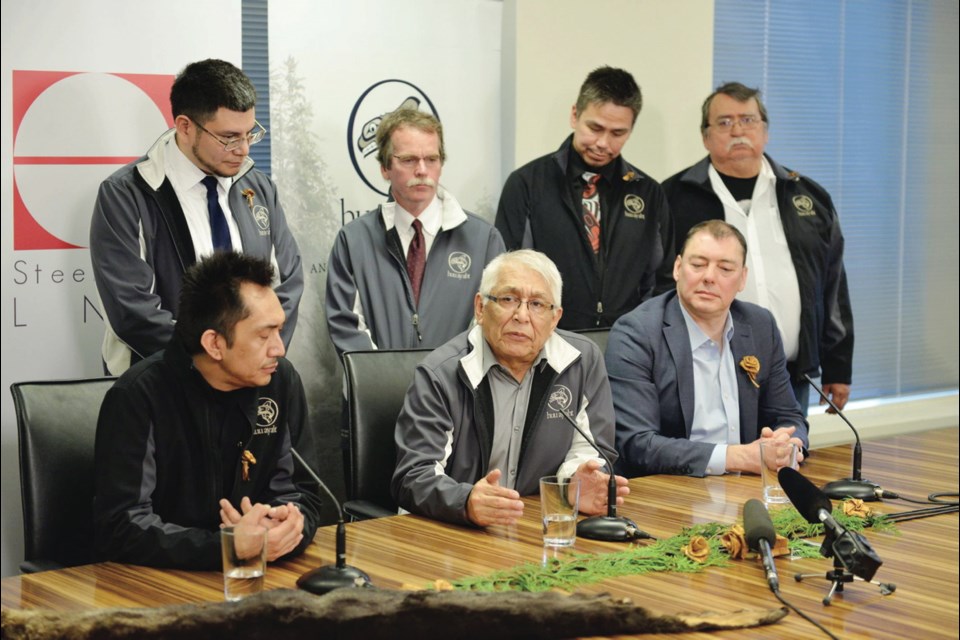A Vancouver Island First Nation has agreed to host a liquefied natural gas export facility in its traditional territory and co-manage its development.
The Huu-ay-aht First Nation, a community of 750 based near Port Alberni, voted 70 per cent in favour of the agreement with Steelhead LNG in a referendum Saturday. The Sarita Bay facility would have a 24-million-tonne capacity, which means 288 tankers per year or 5.5 per week during peak operations.
The referendum is the earliest point in a major project development that a B.C. First Nation community has voted to approve an LNG facility or pipeline project, Steelhead LNG said. It’s also the first co-management development arrangement for an LNG export facility in the province, Rich Coleman, deputy premier and minister of natural aas development, said in a statement.
“Today is a huge day for Steelhead LNG, driven by the Huu-ay-aht First Nation’s referendum,” Steelhead CEO Nigel Kuzemko said at a press conference Monday. “We are thrilled to be at this point working with the Huu-ay-aht, who are setting precedents not just in Canada for aboriginal relationship with industry, but also globally.”
Kuzemko and the Huu-ay-aht representatives would not say what equity stake the First Nation would receive. As co-manager, the Huu-ay-aht will have a seat on the oversight board and an opportunity to compete for contracts related to the project.
Steelhead LNG would invest in watershed restoration, including salmon enhancement projects, as conditions of the agreement, said Huu-ay-aht elected chief councillor Robert Dennis Sr.
While many of the jobs will be in construction, the First Nation is working with Steelhead LNG to identify more long-term sustainable positions, so residents can train for them in advance, he said.
Kuzemko could not say how many jobs would be created, however, since that depends on the project’s final size. “The project size, scope and scale and the amount we have to spend to do that will evolve over time,” he said.
Steelhead LNG has also proposed a floating facility at Bamberton with a capacity of six million tonnes. The Malahat First Nation has partnered with the company on the project, at the same time that it has been panned by five WSANEC First Nations and met with angry opposition at a 600-person information meeting at the Mary Winspear Centre.
The natural gas for both projects would be sourced from the Western Canadian sedimentary basin, which lies under B.C. and Alberta. “We do need to be able to get the gas from there to Vancouver Island. Obviously we have been in discussion with pipeline companies for a number of years now looking at routes,” Kuzemko said.
Steelhead LNG has proposed a pipeline system that would run 53 kilometres from Sumas to the Birch Bay-Custer area of Washington state. Another 75 kilometres would be placed on the ocean floor of the Salish Sea from Washington to Vancouver Island.
Kuzemko said it’s too early to say whether the Sarita Bay project would be quashed if the Malahat project falls through, but the company is looking at ways to minimize costs, such as sharing the same pipeline.



